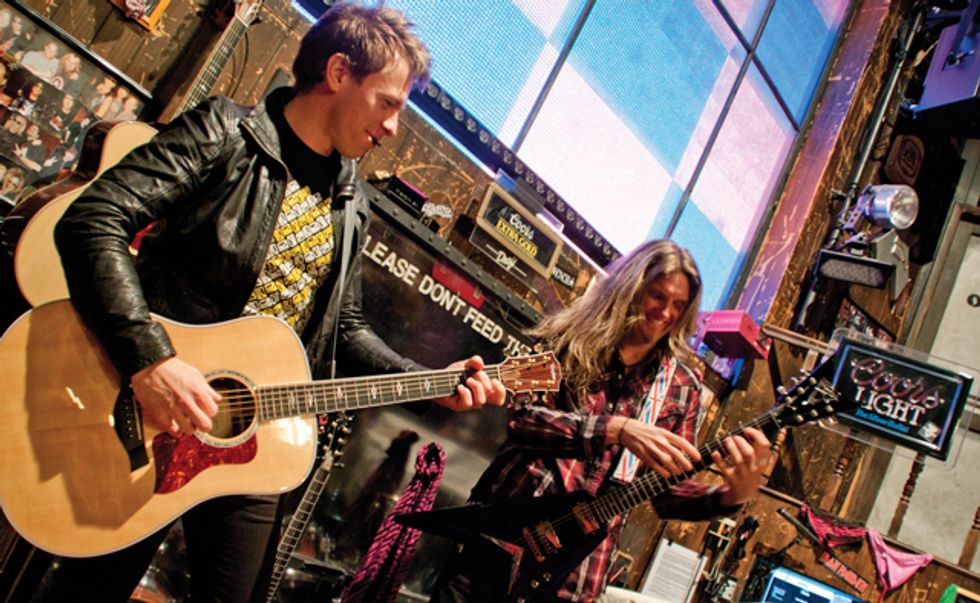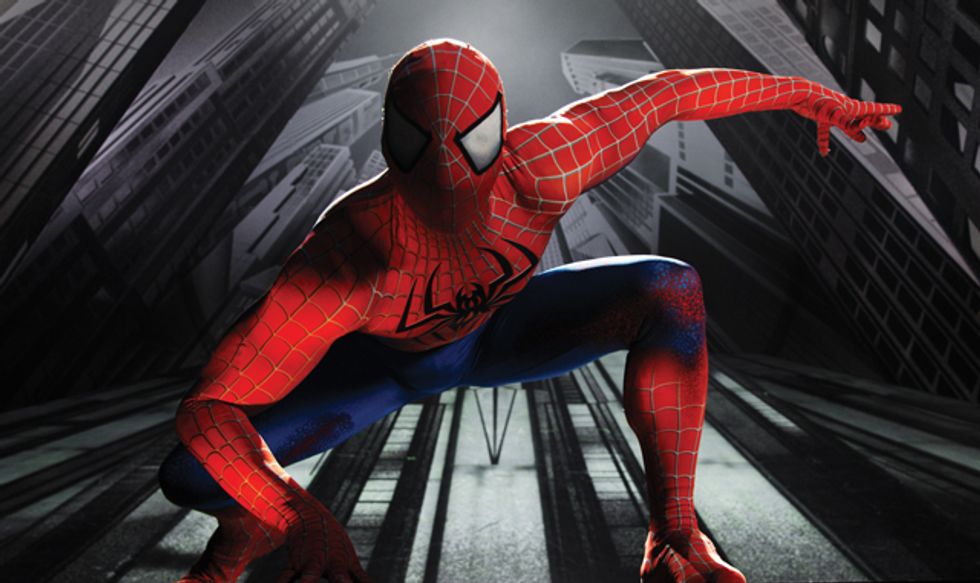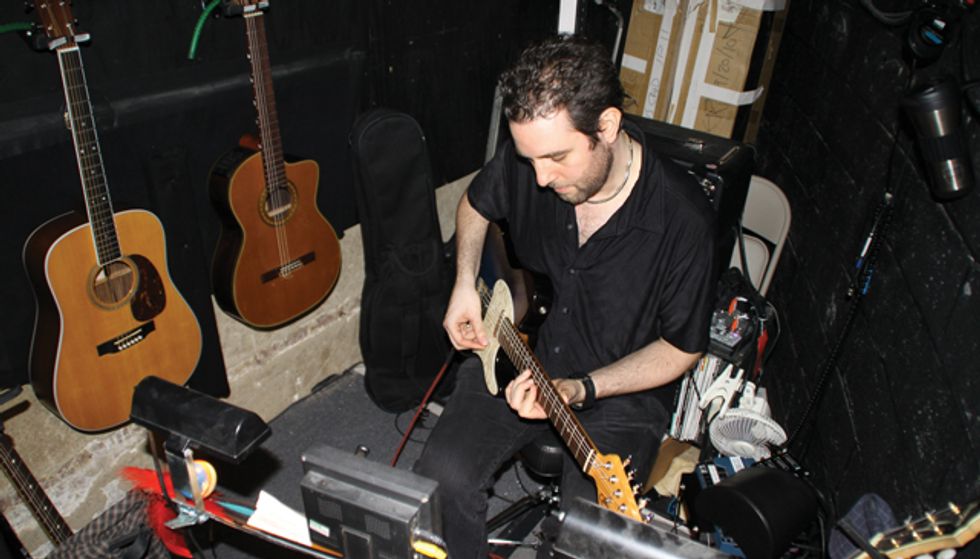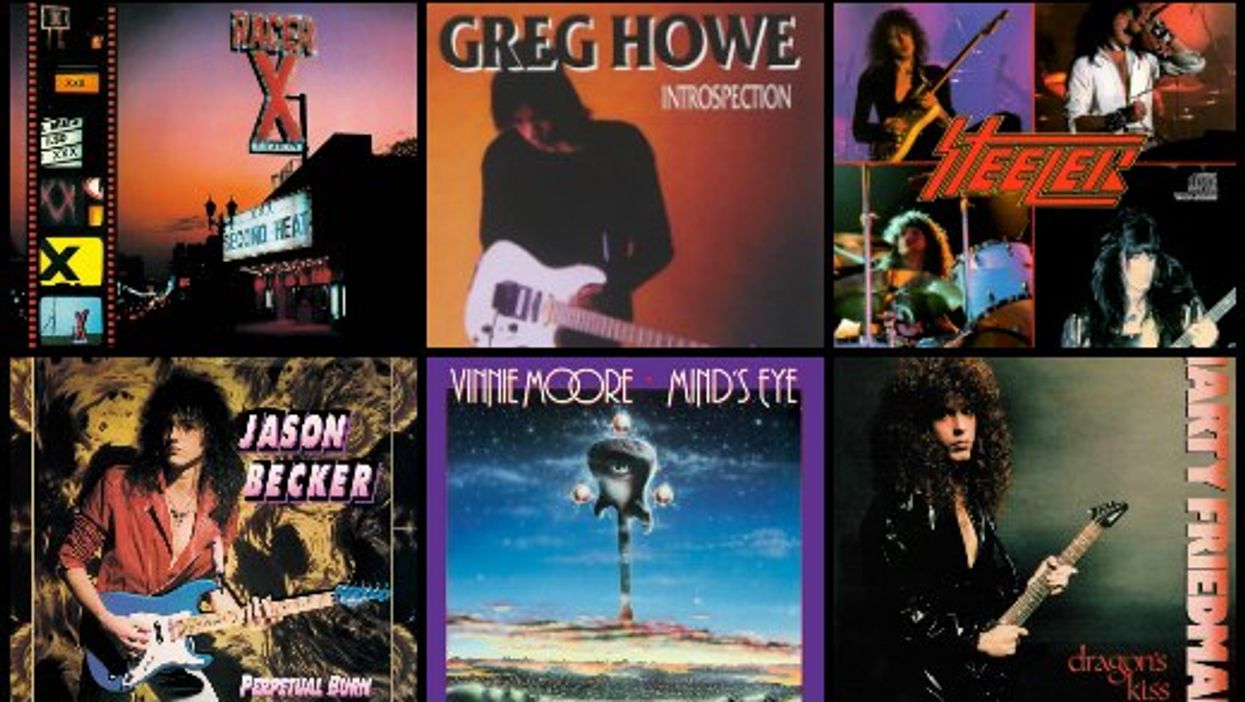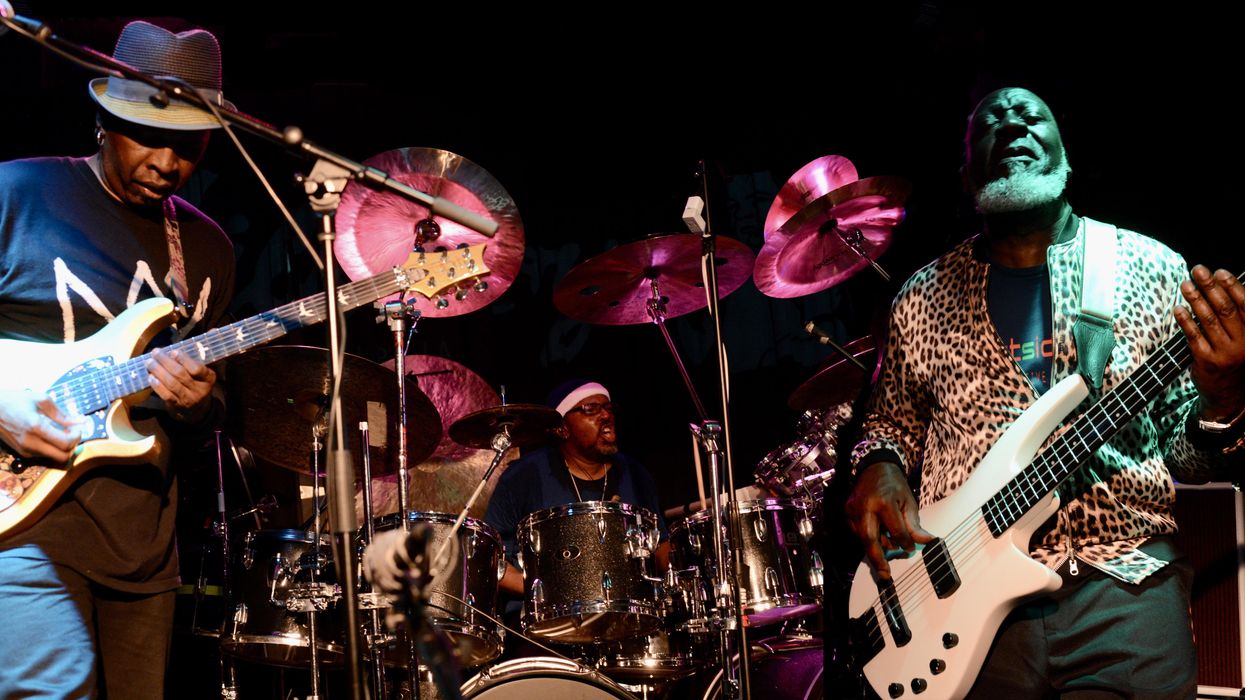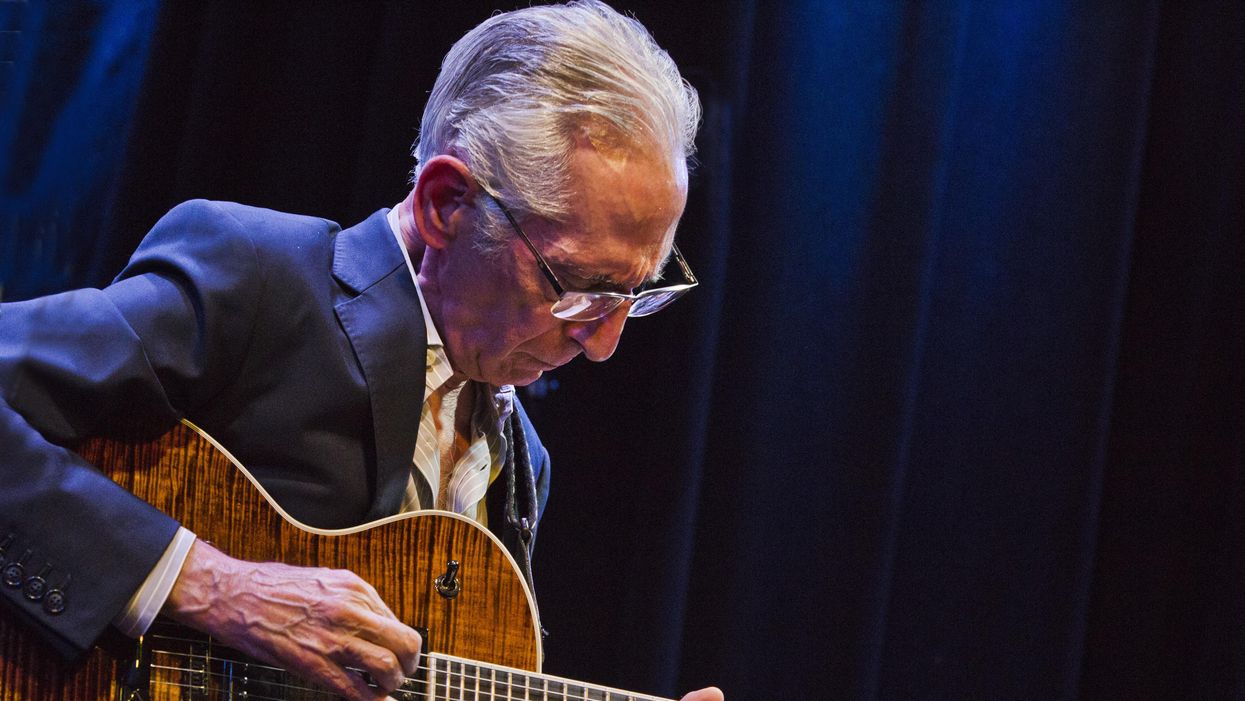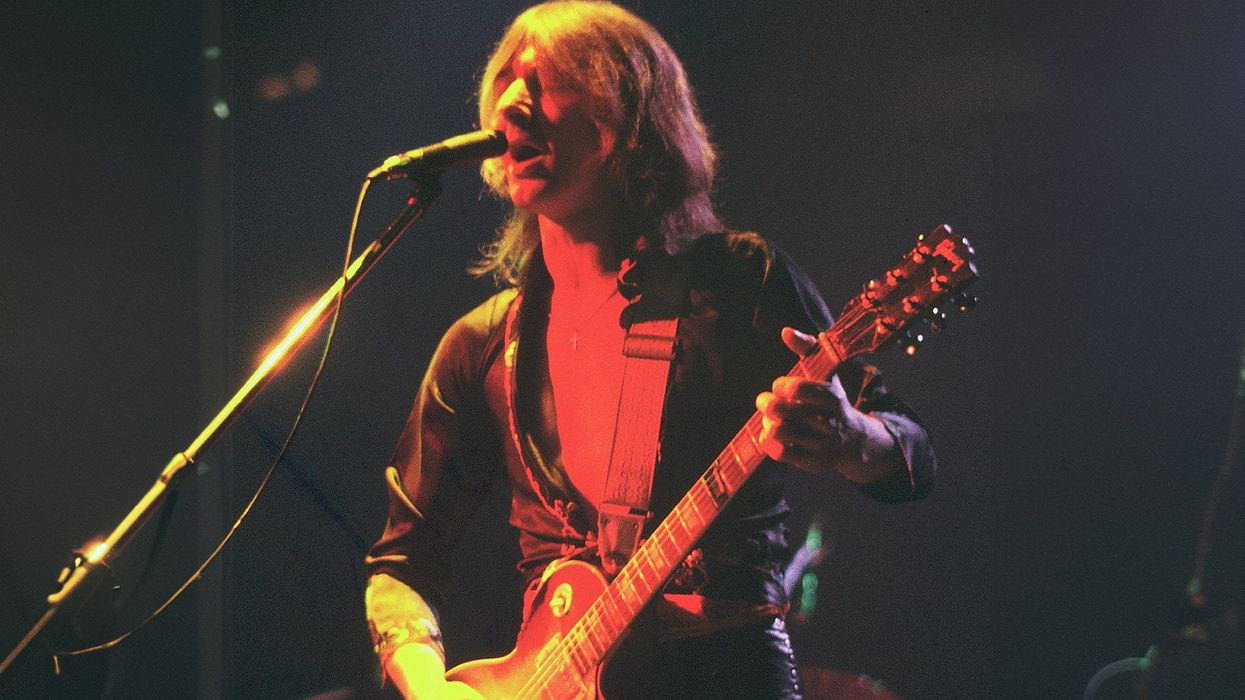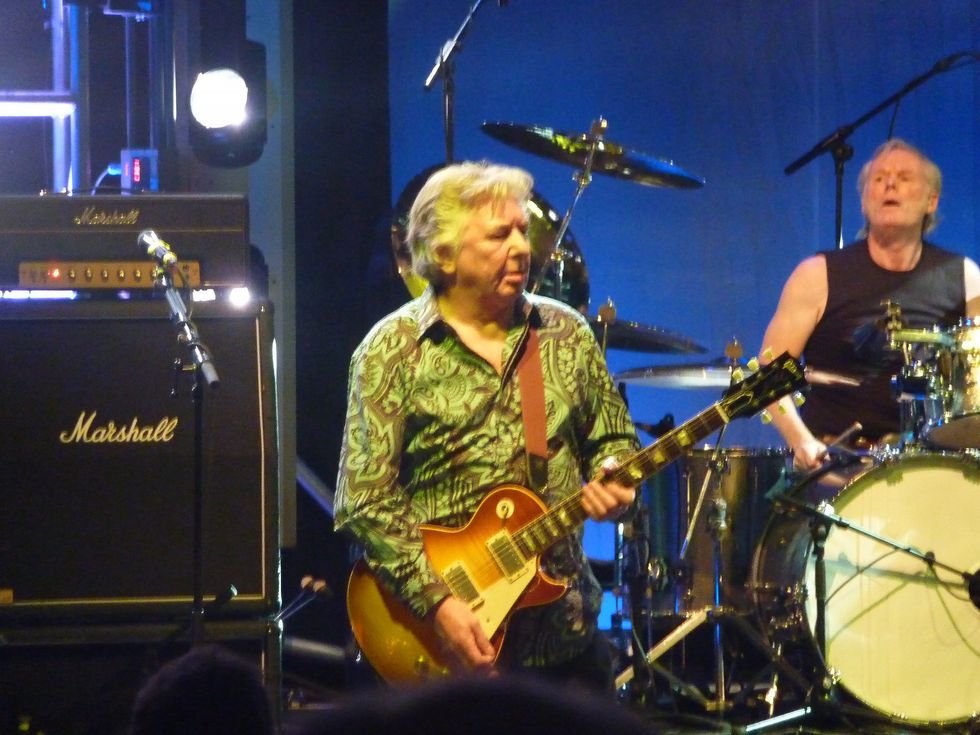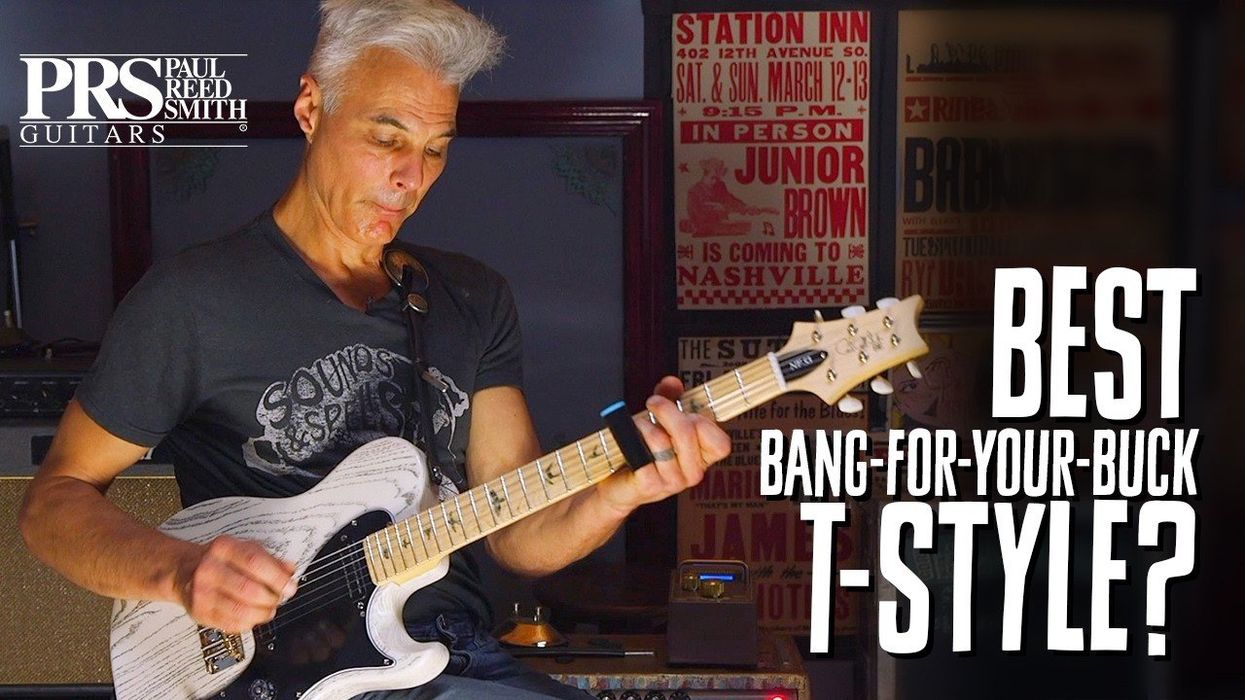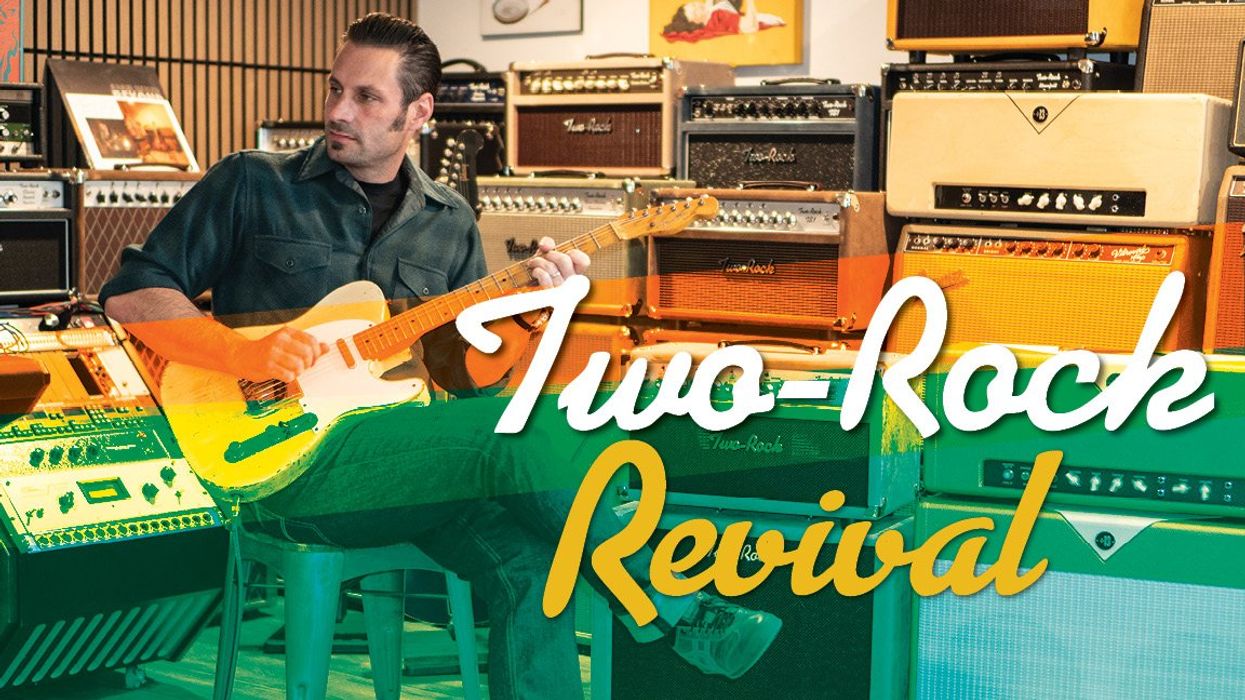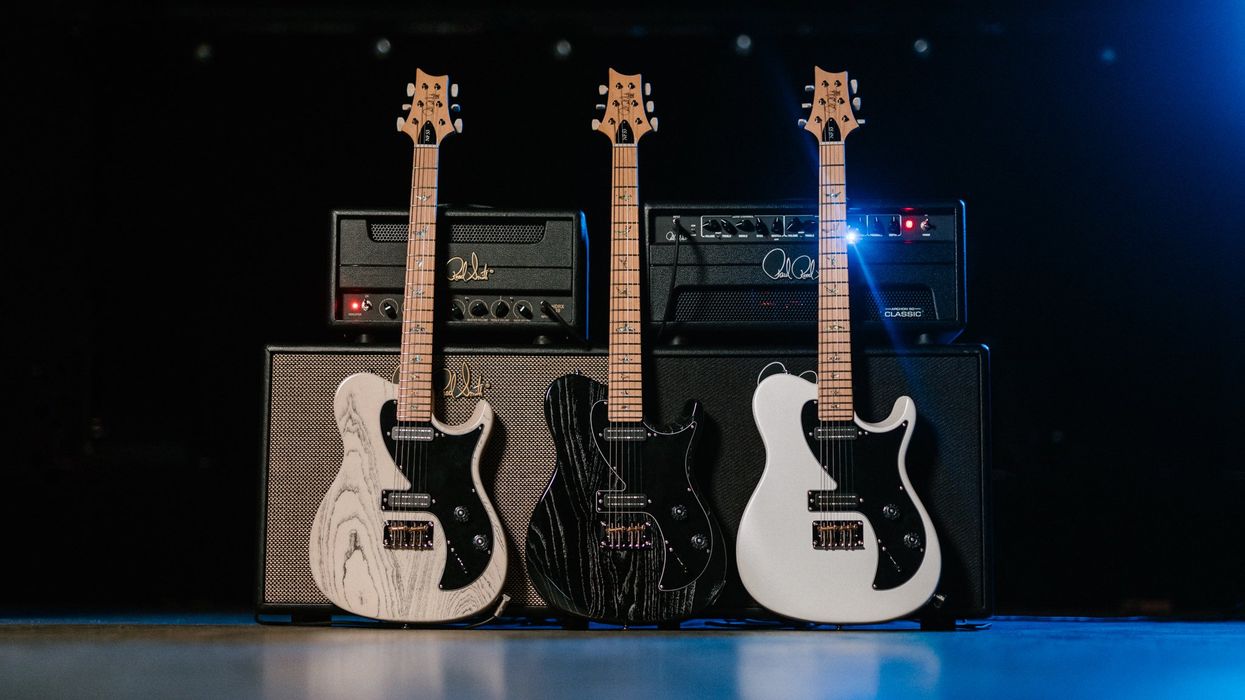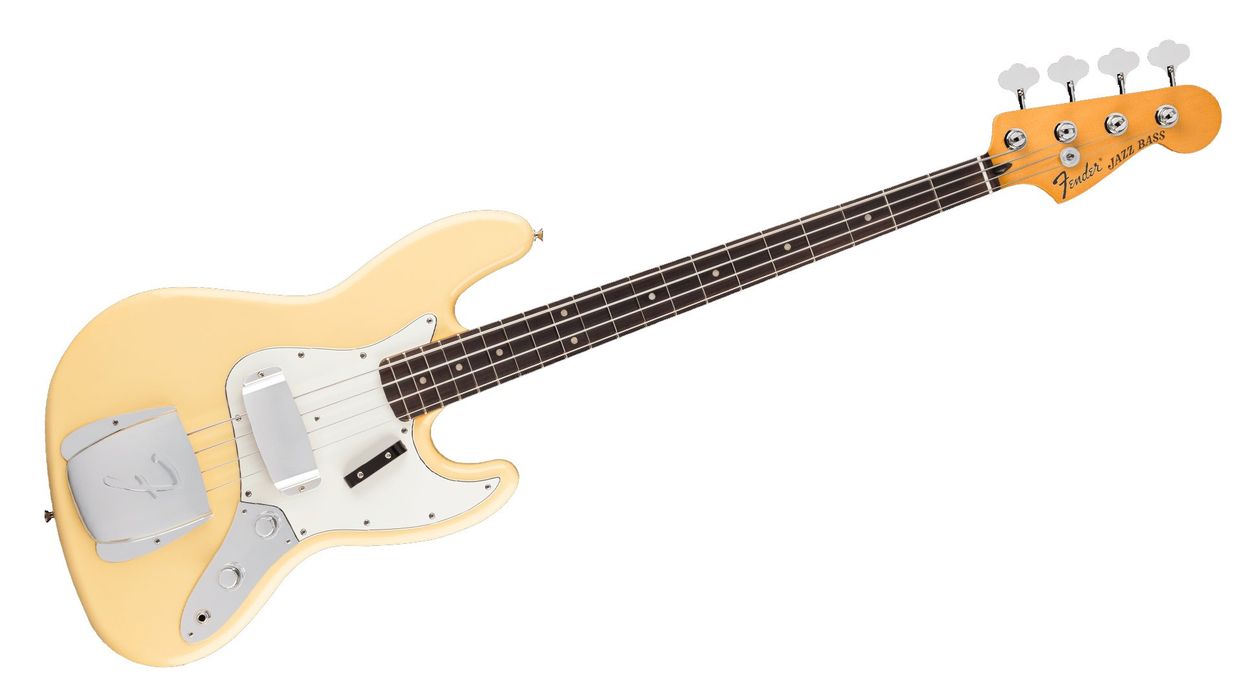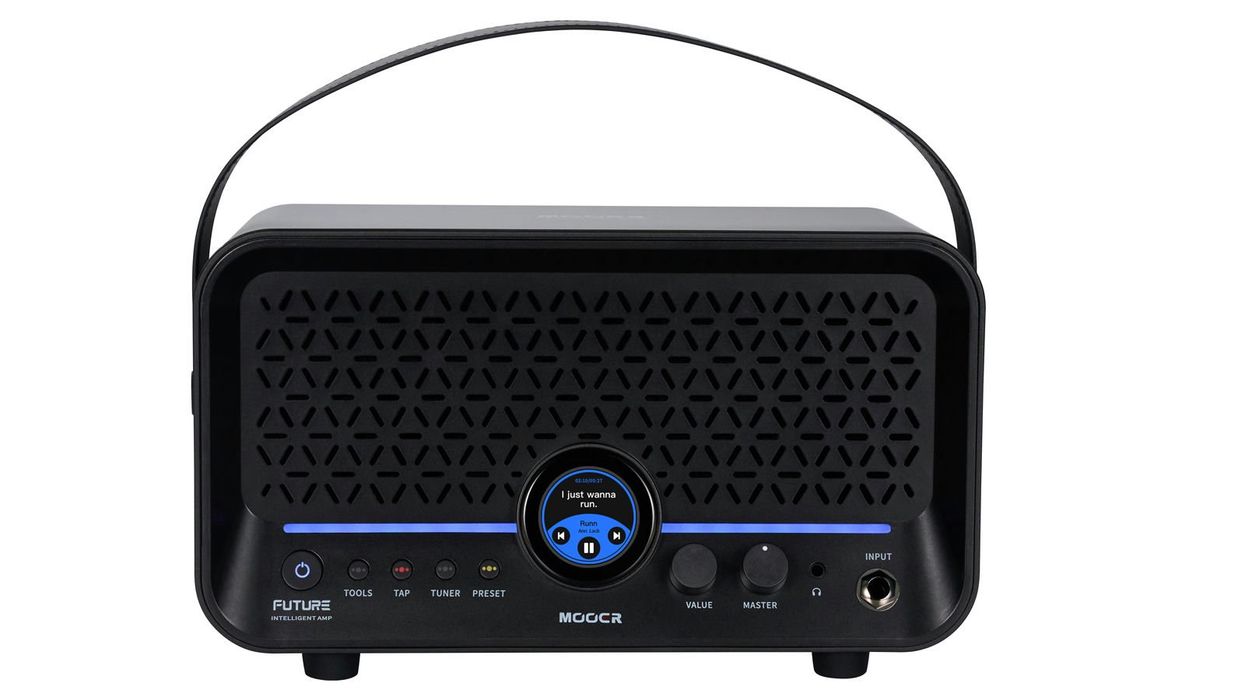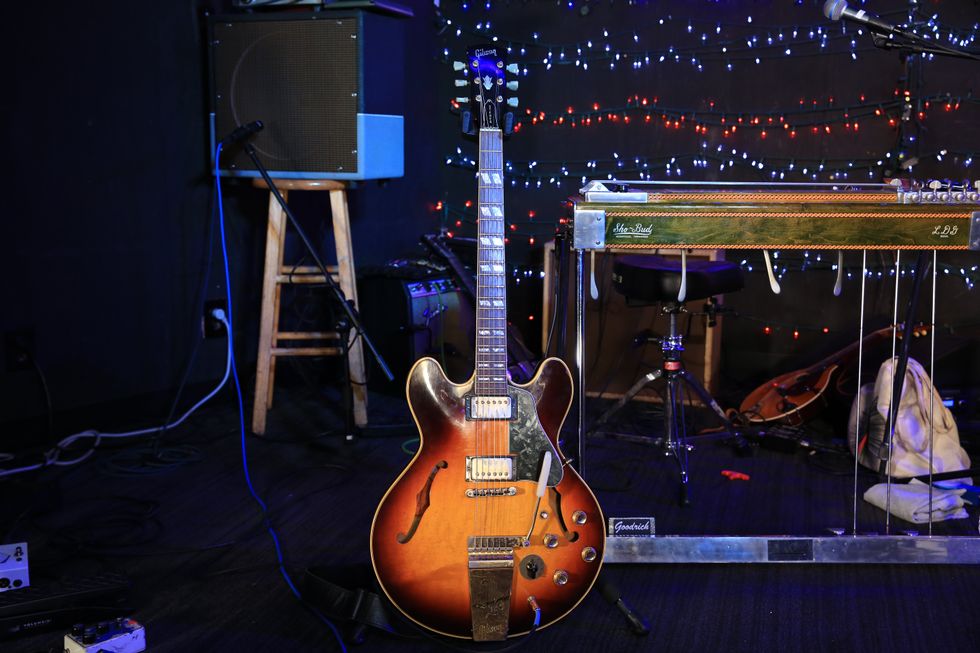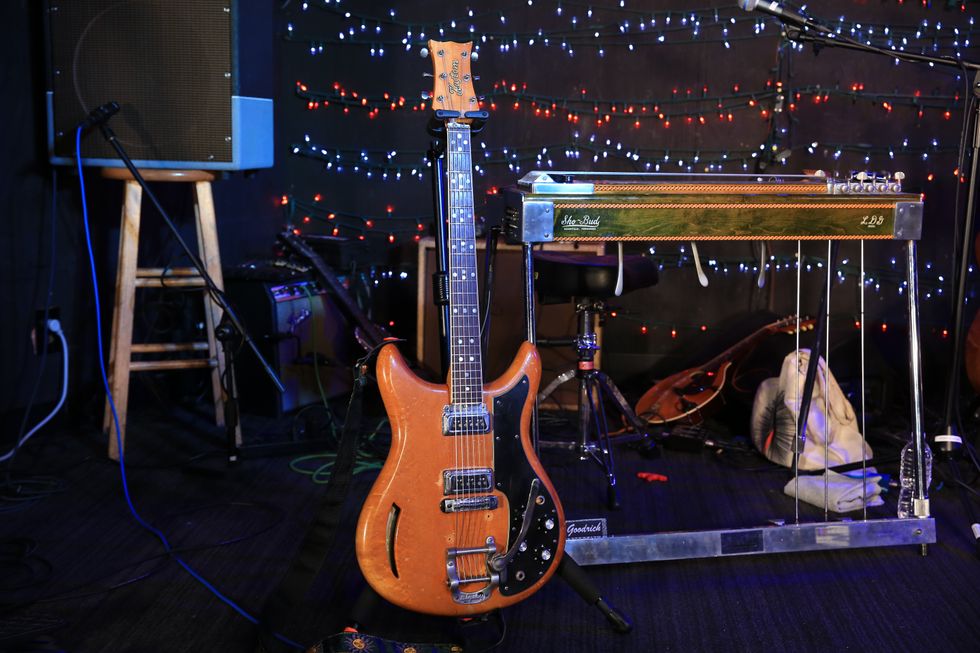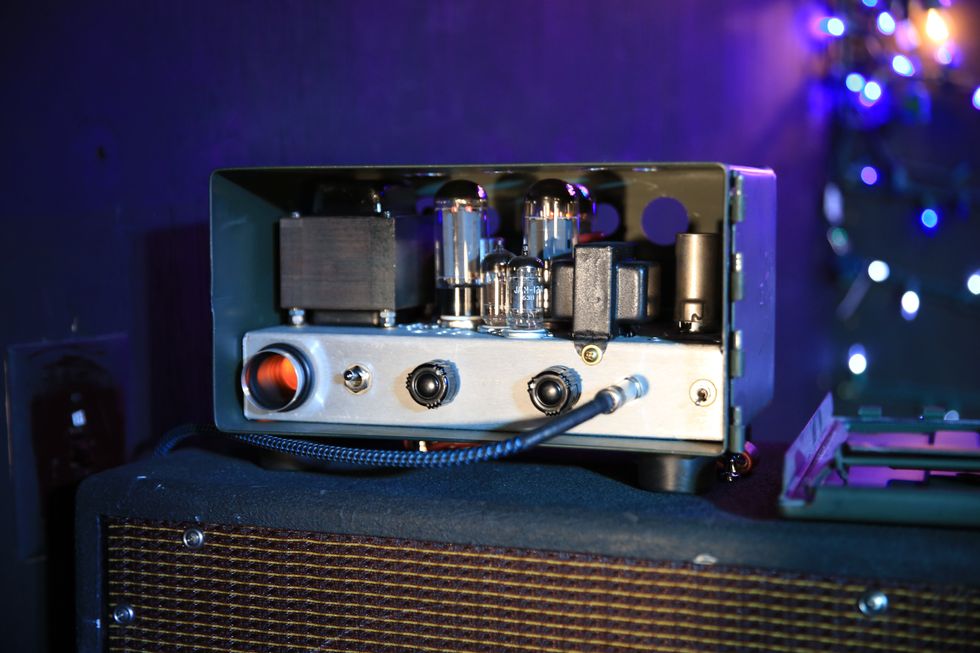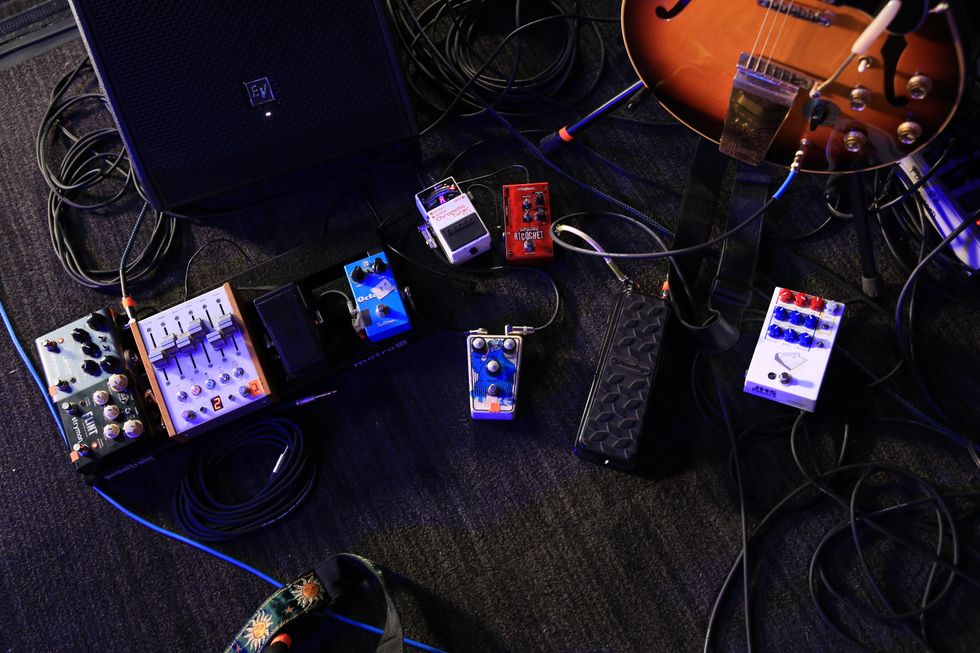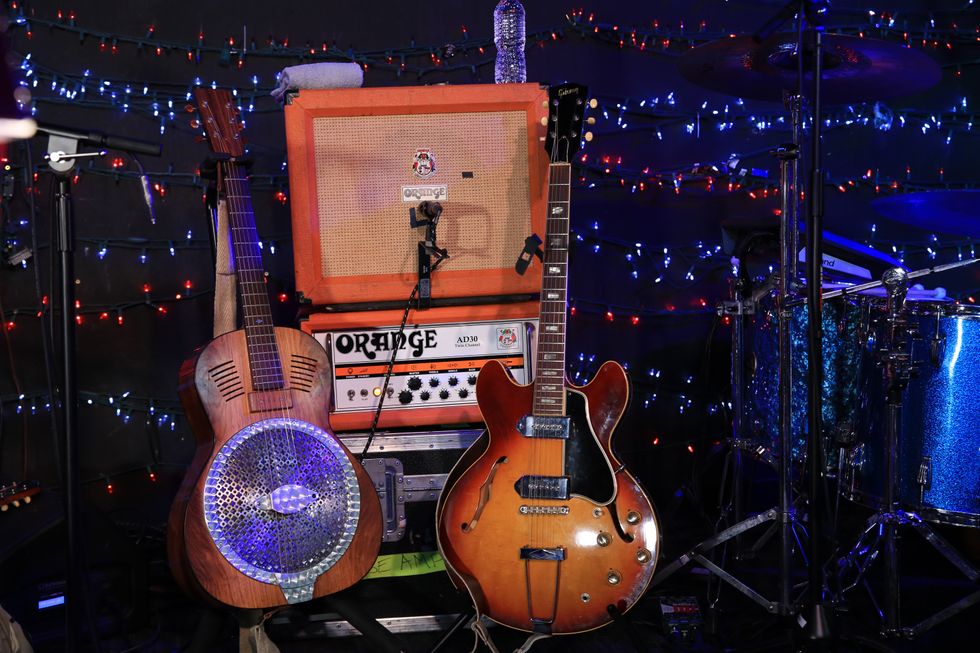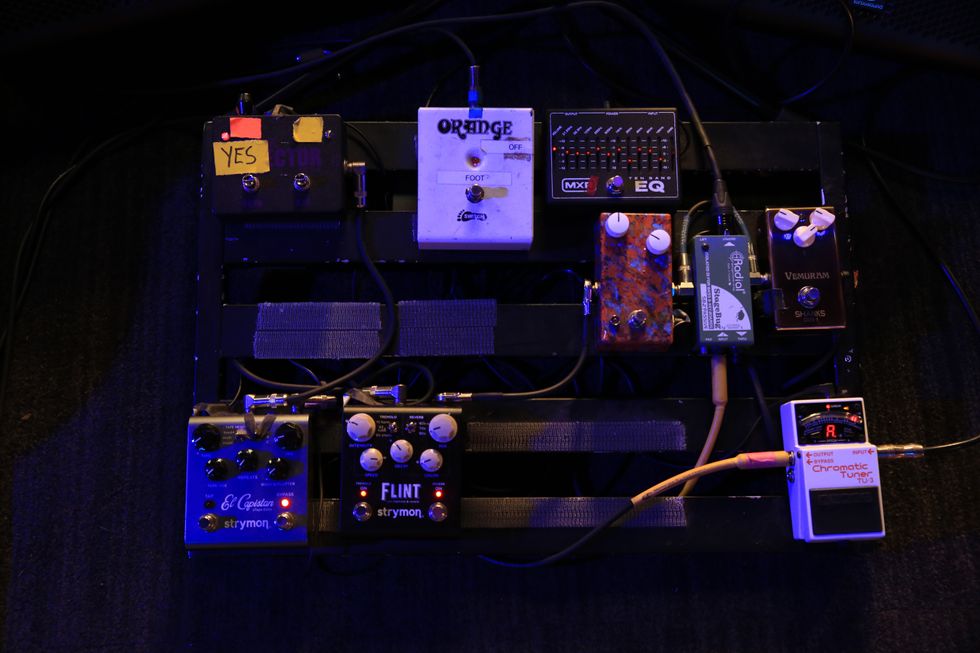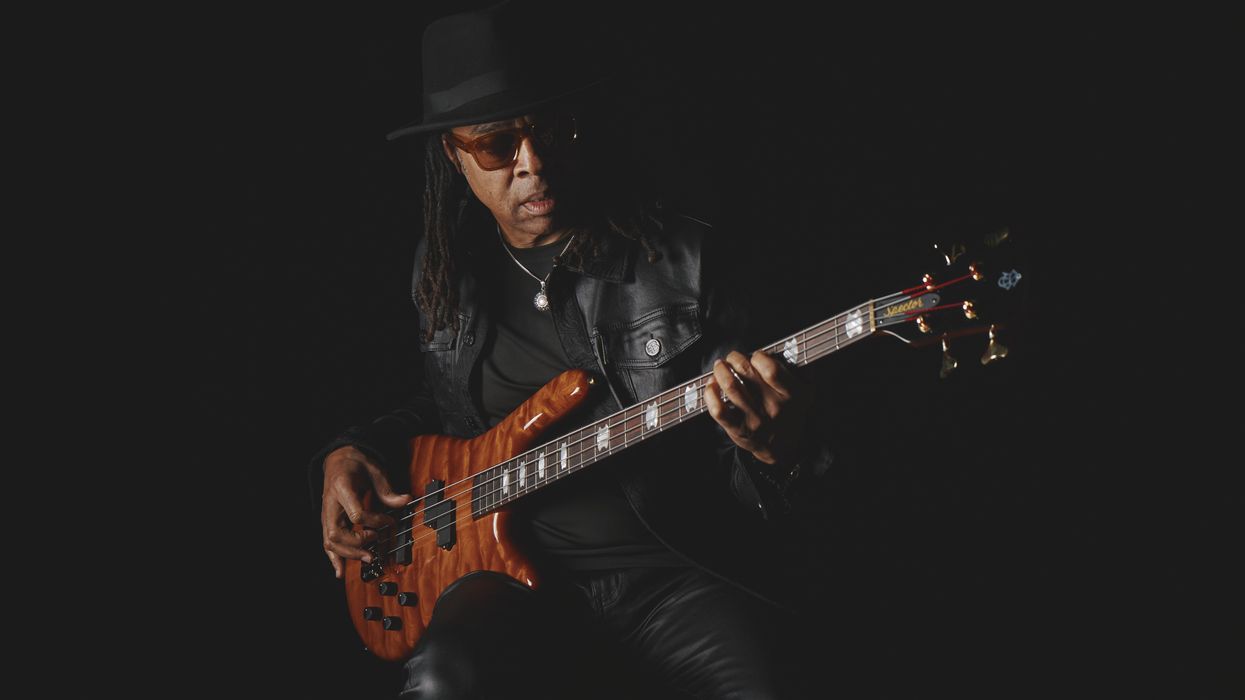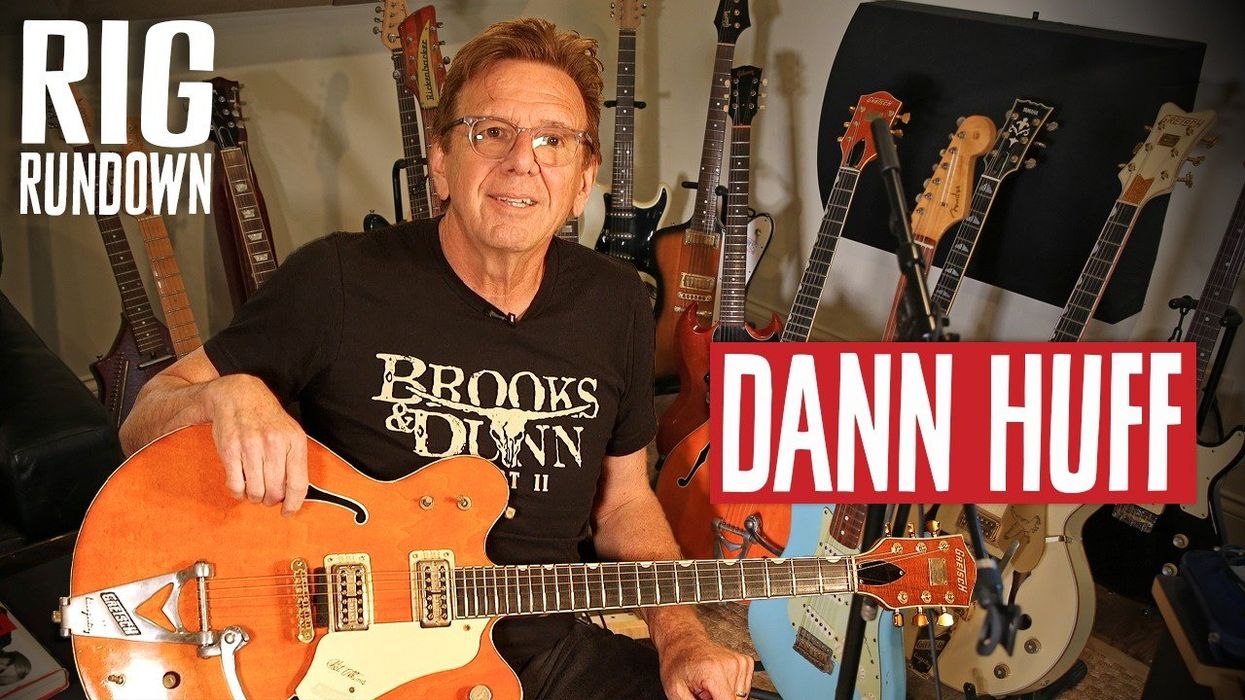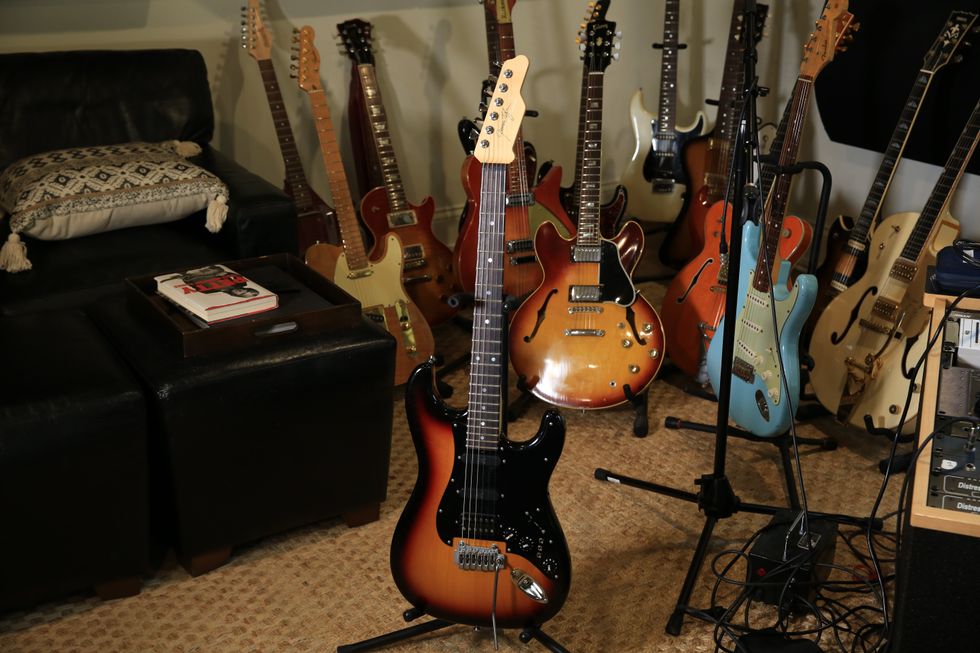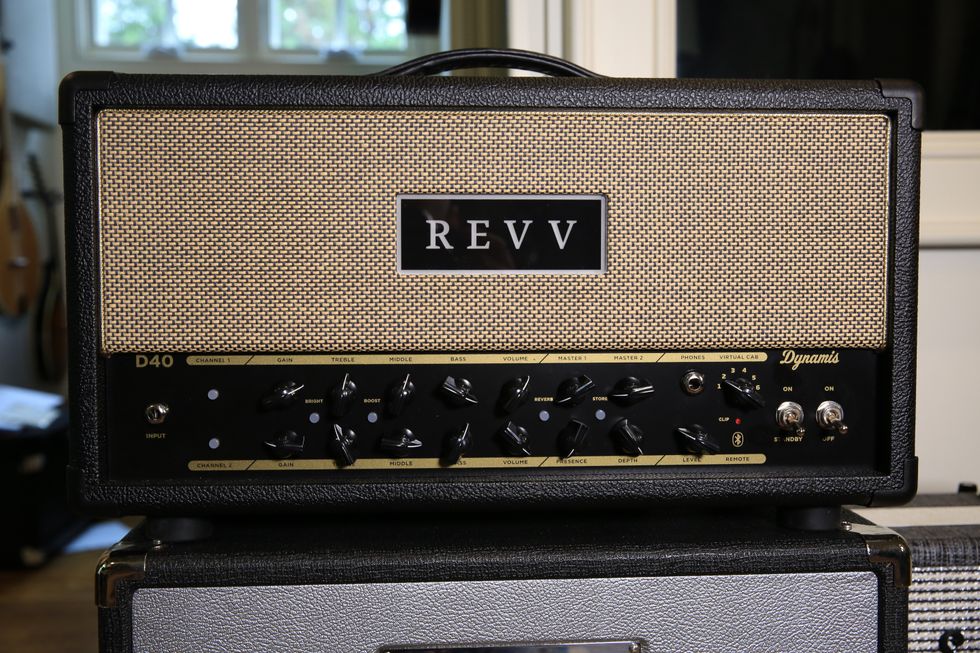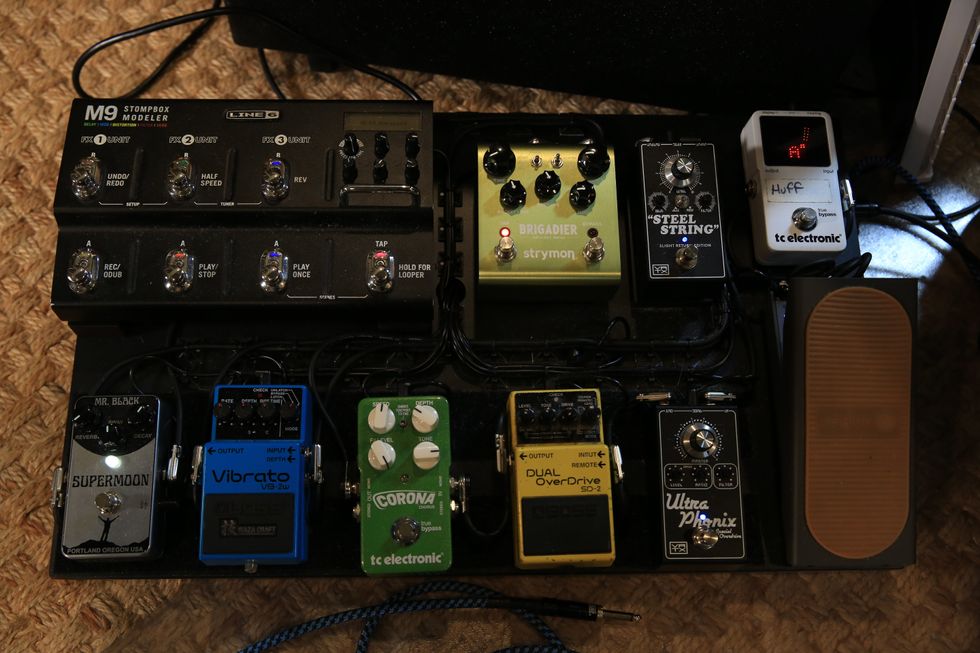We wouldn’t blame you if the word “Broadway” conjures images of grown men in furry cat costumes or jazz-hand-wielding women in fishnets and top hats rather than tasteful guitar playing. But blazing 6-strings have snuck onto the Great White Way via several modern productions that up the cool factor and inject some rock into New York City’s great theater tradition.
Presently, three of the hottest such productions are Book of Mormon, a comedy written by South Park creators Trey Parker and Matt Stone that’s taken Broadway by storm; Rock of Ages, a raucous love letter to ’80s hair rock; and Spider-Man: Turn off the Dark, a stage adaptation of the iconic comic set to a soundtrack written and produced by U2’s Bono and the Edge.
Besides the obvious benefits of having a fairly high-profile gig, networking with rock stars, and having a steady paycheck, there are other perks for players who break into the scene: On top of the $1,545 weekly base salary (big hits bring in even more cash), you get medical and pension benefits through the local musician’s union you’re required to join, and if you’re feeling burnt out or need to go on tour with a side project, you can take an unpaid leave of absence for up to 49 percent of a show’s run. Further, if you appear onstage and in costume or play several instruments in a single production—yes, nylon-string and archtop count—that’s considered a “double” and it brings a pay increase. The first double brings a 12.5-percent bonus, and every double after that increases by 6.25 percent (for instance, a second double gets an 18.75-percent increase, and so on).
We met with the six players who cover guitar duties for these three shows to chat about how they broke into the Broadway scene, the challenges and rewards of the gig, keeping it fresh eight shows a week, and what gear they use. The story doesn’t stop here, though—head to premierguitar.com to watch our Rig Rundowns for each show, and to check out a photo gallery of their rigs.
Rock of Ages
If there’s a single show on Broadway that best showcases guitar, it’s Rock of Ages. It’s packed with ’80s hits—from Twisted Sister’s “We’re Not Gonna Take It” to Quiet Riot’s “Cum on Feel the Noize” and Pat Benatar’s “Hit Me with Your Best Shot”— which encourages crowd singalongs and makes the gig a bit more like playing to sold-out crowds in a cover band than backing a hit musical. Guitarists Joel Hoekstra and Tommy Kessler provide more than backing licks—the two perform on a 20' x 24' platform onstage throughout the entire show as members of the fictional band Arsenal. As Kessler puts it, “I like to think the guitars are one of the main stars of the show.”
For Hoekstra and Kessler— who split their time between the Rock of Ages gig and touring stints with Night Ranger and Blondie, respectively—it seemed a perfect match. Hoekstra has played lead guitar since the beginning. “I had subbed on the show Tarzan that Phil Collins wrote the music for,” he explains, “and the music supervisor for Rock of Ages was the keyboard player on that show. He looked me up, saw I was with Night Ranger, and it seemed to be a natural fit. There really wasn’t an audition.”
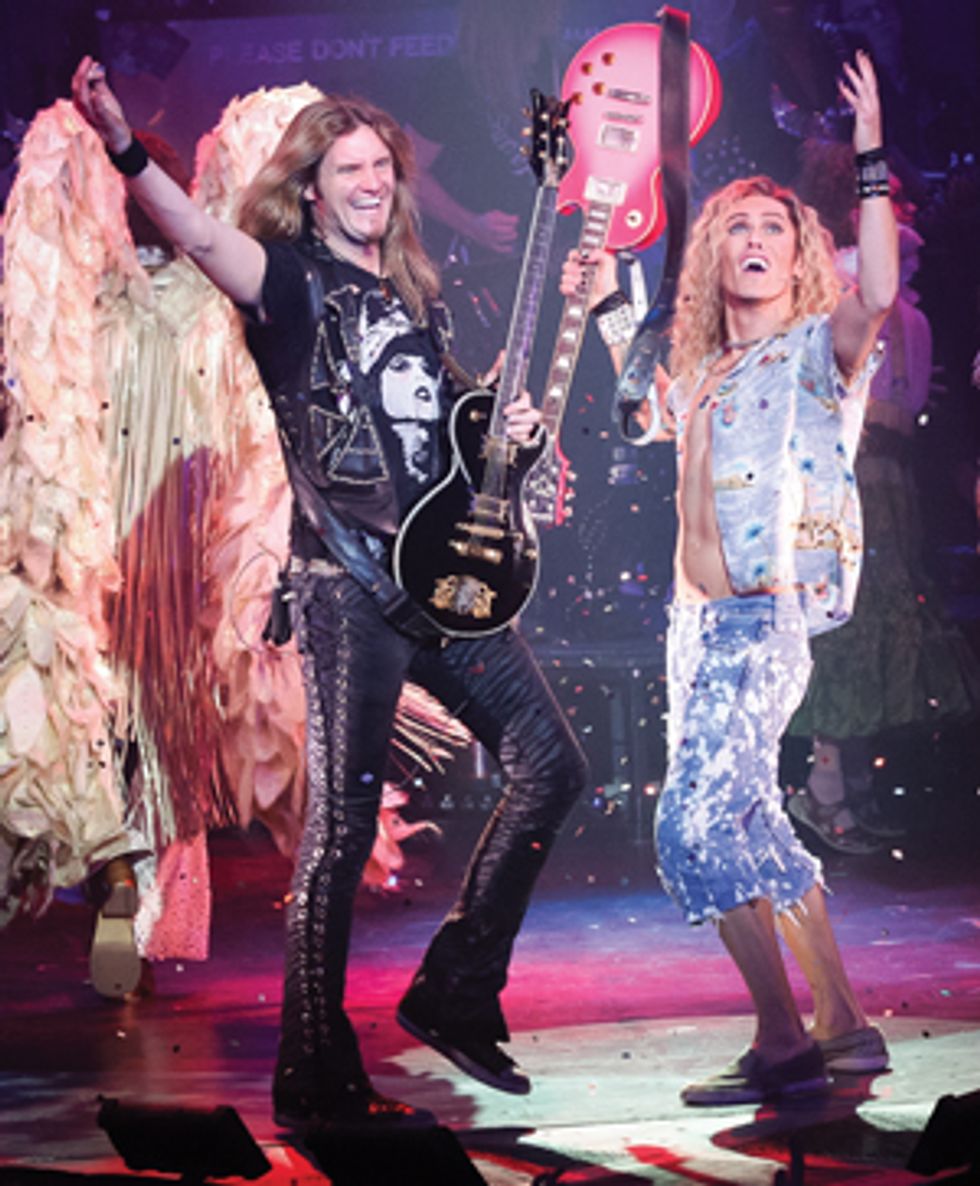
When Hoekstra started, the music was still being written. “We didn’t receive the music until the day of the first rehearsal—and there were only two rehearsals,” he explains. He prepared by learning the parts to the originals and going through tapes of previous productions of the show. “It allowed me to prepare 50 percent or so for that first day,” said Hoekstra.
Since the guitarists are onstage, however, they can’t rely on sheet music. “We had to memorize the music ASAP—nobody wants to see a dude reading charts while shredding!” Kessler, on the other hand, got the gig through a blend of old-fashioned networking and social media. He looked up Hoekstra at the suggestion of a mutual acquaintance and got in touch via MySpace. Hoekstra checked out Kessler’s Van Halen videos on YouTube, and later came calling when he was looking for a sub. “He said it was tough to find someone who could play ’80s-style rock, like the finger-tapping stuff, and also had theater experience,” Kessler says. “I love a good challenge, so I went to every single rehearsal and every tech meeting.” After subbing a few times, the second guitar spot opened up and Kessler got the gig.
Rock of Ages Gear
Guitars
Joel Hoekstra
DBZ Cavallo, DBZ Bolero,
DBZ Barchetta
Tommy Kessler
DBZ Cavallo, Taylor 810,
Taylor 854ce 12-string
Amps
Joel Hoekstra
DBZ Cavallo, DBZ Bolero,
DBZ Barchetta
Tommy Kessler
DBZ Cavallo, Taylor 810,
Taylor 854ce 12-string
Effects
Joel Hoekstra
Fractal Audio Axe-Fx,
Ernie Ball volume pedal
Tommy Kessler
Fractal Audio Axe-Fx
Accessories
Ernie Ball Power Slinkys
.011-.049 electric strings,
Ernie Ball .012-.054 acoustic
strings, Boss TU-2
tuner (Hoekstra), Boss
TU-3 tuner (Kessler), Tech
21 MIDI Mouse
The guitarists get to the theater about an hour early to clean the guitars—DBZ electrics and Taylor acoustics—and double check the rest of the Fractal Audio Axe-Fx-centered rig. Then, they eat and get in costume—including a requisite wig for Kessler (Hoekstra already has long locks).
Despite playing a grueling eight shows per week, both players say the live-performance element keeps the show fresh. “The audience gives us a certain energy much like that of a live rock show,” explains Kessler. “We often play into some of the jokes in the show, and of course we bring out our favorite style techniques and moves from the ’80s—sometimes we can even pop up in the theater aisles if the time is right.”
“You have to perform each night like it is a brand-new show,” Kessler says. “You want to keep fresh and excited, because it’s probably the first and only time that audience will see you, and they deserve a great show—and that is what I want to give them.”
Of course, sometimes that’s easier said than done. “It can be physically and mentally challenging,” says Hoekstra, though he’s quick to add, “I am one lucky dude. Theater gigs are great because they keep your chops up, pay pretty well, and keep you actively networking— and you’re able to sub out and do other gigs, too. It’s allowed me to keep Night Ranger and Trans Siberian Orchestra going the entire time, as well.”
Watch our Rig Rundown:
Spider-Man: Turn off the Dark
Anytime a comic-book hero makes the leap to screen or stage, you can count on plenty of attention, both good and bad. Add in half of one of the biggest bands in the world, and it gets even bigger. Such was definitely the case with Spider-Man: Turn off the Dark. But though it got some flack early on, it’s now performing to sell-out crowds every week. The show was scored by U2’s Bono and the Edge, and by all accounts they were very particular, down to the minutest details.
“In general, you don’t have to audition for Broadway shows,” says guitarist Matt Beck. “The contractor knows a bunch of musicians and then chooses the right person for the gig.” But it was essential to both Bono and the Edge to pick players who projected the right vibe and style for their music.
When music contractor Antoine Silverman conducted auditions, he contacted several guitarists, including Beck and Ben Butler. The Edge had requested that the guitarists use a Fender Telecaster and an Epiphone Casino, so Beck brought those to the audition and played through two songs from the show, as well as one U2 song. “I played with a live drummer and bassist, and the whole thing was videotaped so Bono and Edge could pick from it later. Dallas Schoo [the Edge’s guitar tech] was onsite with a Vox AC30, a Line 6 DM4 [Distortion Modeler], and a Line 6 DL4 [Delay Modeler],” says Beck. Because Schoo was dialing in the sounds, Bono and the Edge were able focus more on playing than each applicant’s tone.
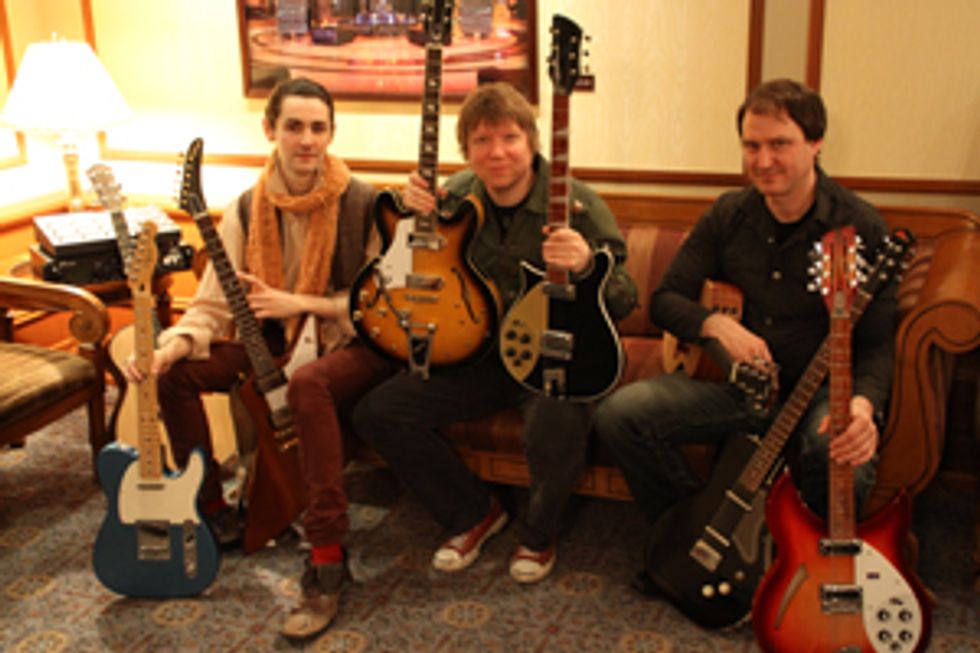
Butler went through the same audition process and scored the gig despite never having played Broadway before. “I was sent some songs to learn, including the U2 hit ‘Vertigo,’ but when we got there they played us different versions of the same songs, which made it tricky.”
The third guitarist to join the Spider-Man guitar army was Zane Carney, who landed the gig through a more traditional route: His brother Reeve—who fronts the originals band that Zane plays guitar in (called simply Carney)—had landed the lead role, and he suggested Zane be brought aboard, too. Pretty soon, their whole band got in on the action. “A few months later while we were on tour, they asked us to come to New York to see if we could read music and be versatile enough,” says Zane. Eventually, drummer Jon Epcar and bassist Aiden Moore were also offered spots in the show’s core rhythm section.
Once the guitarists were in place, it was time to gear up for more than two hours of music. Before rehearsals officially started, the whole team met in the studio to record and work on the constantly changing material. “The tricky thing was that we had to learn from Edge’s own demos, and then we recorded our versions at different times in different studios,” says Butler. “Then they gave us the charts for David Campbell’s orchestrations—which changed everything again.” During rehearsals, the guitarists took note of things the Edge and Bono liked—including what type of pick to use on certain songs—so that they could be added to the score later.
Spider-Man: Turn off the Dark Gear
Guitars
Matt Beck
Epiphone Casino,
Fender Custom Shop Telecaster,
custom Rickenbacker
Ben Butler
DJerry Jones Baritone,
custom Rickenbacker
12-string, Taylor GS Mini
Zane Carney
Gibson Explorer,
Taylor 314ce, Fender
Custom Shop Telecaster
Effects
Fractal Audio Axe-Fx
Strings and Picks
Matt Beck
D’Addario
EXL115s (.011-.049), Elixir
Nanoweb 12102s (.011-.049),
Fender medium celluloid
picks, Herdim medium picks
(turned around so the dimples
scrape the strings)
Ben Butler
D’Addario
EXL110s (.010-.046), Elixir
Nanoweb phosphor-bronze
16102s (.013-.056), Fender
medium celluloid picks, Dunlop
Tortex medium picks
Zane Carney
D’Addario
EXL115s (.011-.049), Martin
Phosphor Bronze (.012-.054),
Dunlop Tortex 1mm picks,
Herdim medium picks
Spider-Man’s official opening was delayed several times before finally opening in June 2011, but now that the crew has more than 500 performances in the can, trying to keep the same intensity day after day can be a struggle. As a rule, Broadway musicians are allowed to sub up to 50 percent of their shows, and the same applies for Spider-Man. “The hardest thing is to play with the same amount of vigor as when we started,” says Beck. “Thankfully, each player is allowed to have subs,” Beck says, “so we can take off if we ever feel the need to have a break, do another gig, or even tour.”
Carney adds, “Getting through the 80-plus-hour workweeks for six months while staying professional and bringing 100 percent every day with legends like Bono and Edge present was a really great way to learn how to dig even deeper.”
For Butler, digging deeper means learning how to relax, focus on the music, and remind himself that live art always has its good and bad moments. “It’s very easy to do things to keep your mind occupied [between numbers]—read, play chess, check out vintage guitars on eBay—but if you get distracted and miss an entrance or something, that snaps you right back to sharp focus. I try to just go into a Zen mode and remember that no two shows are the same and just watch the conductor and play.”
Despite the convenience of the aforementioned scheduling flexibility, it goes both ways. “Spider-Man has been through so many changes before finally opening,” Beck says. “There’ve been different musicians in the band at different times … the band was onstage at one point, then not, then on again—and finally not. The list goes on and on, and the easier you can roll with the punches, the less stressed you’ll be.”
As for the music itself, Butler says many people are surprised by how little it resembles what they’re used to hearing from Bono and the Edge. “It’s much more varied than U2.” Beck says he plays parts more than he does riffs, which allows more of the signature Edge sound to come through. “I feel like my parts are more vibe-y and ethereal— you might not notice them in the mix of everything but you’d feel something was missing if they were gone. I do a lot of EBow, a lot of swell-y, shimmering sounds. And, of course, a nice dose of the dotted-eighth- note delay thing.”
Watch our Rig Rundown:
Book of Mormon
When most people hear a new musical is taking Broadway by storm, they figure it’s got over-the-top production, well-crafted songs, and that palpable energy that only a live musical can create. And with Book of Mormon, the Tony-winning musical from the same twisted minds that brought us South Park, you can add plenty of dirty jokes and crude humor to the list, too.
Guitarist Jake Schwartz has been holding down the guitar chair since the early stages of development. “My road to Mormon started back in 2003, when I started subbing on Wicked, where Stephen Oremus was the original conductor and music director. A few years later, Stephen called me to play a developmental reading for a show written by Trey Parker, Matt Stone, and Bobby Lopez. I ended up doing several readings over the course of three years, so I guess that was my audition process.”
Breaking into Broadway takes many different paths, but Schwartz says projecting a good vibe and networking with other guitarists and music directors opens doors. After subbing on everything from Footloose and Mary Poppins to Jersey Boys and The Lion King, he landed his first chair gig in the short-lived (and very bloody) production of Evil Dead: The Musical. Schwartz’s advice is to track down the chair players and politely email them to let them know who you are—but don’t be pushy. He also says not to sweat it if you don’t hear back right away. “Subbing is a great opportunity to show people what you can do and make good money. Word of mouth is extremely powerful on Broadway, so if you do a good job, it will likely lead to other subbing opportunities.”
On an average day, Schwartz shows up 30 minutes before the show to tune his instruments and make sure his gear is in working order. Unlike Spider-Man and Rock of Ages, his rig for Mormon consists of a more traditional guitar-intoeffects- into-amp setup. “I was just bringing my Tele and acoustic guitar to the readings, but as we moved to Broadway we added other instruments that sounded good on certain songs,” he says. Along with his G&L ASAT Deluxe and Martin D-16RGT, he uses an Ibanez Pat Metheny PM 35 archtop on “Hello” and “Turn It Off,” and a Takamine TC132SC nylon-string.
Book of Mormon Gear
Guitars
G&L ASAT Deluxe with
DiMarzio Noiseless pickups,
Ibanez Pat Metheny PM 35,
Takamine TC132SC nylonstring,
Martin D-16RGT, Fender
Strat with DiMarzio Injector
and Lindy Fralins
Effects
MXR Phase 90, Dunlop Cry
Baby wah, Fulltone OCD,
Pro Co Rat, MXR Micro
Chorus, Boss volume pedal,
Wampler Faux Tape Echo,
Boss TR-2 tremolo
Amps
Mesa/Boogie Express 5:25
Strings, Picks, and Accessories
GHS Boomers (.011-.052), GHS
phosphor-bronze acoustic
strings (.013-.056), GHS La
Classique medium-high-tension
nylon strings, GHS Precision
Flatwounds (.012-.050), Moshay
107-Blue-Small (thick) picks,
Boss TU-2 tuner, Avalon U5
DI/preamp
As the more laidback setups imply, there are also a few points in the show where the band is allowed to let loose. On the two shred numbers, “Man Up” and “Spooky Mormon Hell Dream,” Schwartz brings in a Fender Strat that he hot-rodded with a DiMarzio Paul Gilbert Injector bridge pickup, Lindy Fralin Vintage Hot single-coils, a Callaham steel bridge, and Schaller locking tuners. “It’s a surprisingly great-feeling and playing guitar that’s very versatile and can handle EVHstyle dive bombs and still stay in tune. And then, as the audience is leaving the theater, we get to improvise and rock out—which is a lot of fun.”
But while Schwartz gets some freedom to add little licks and embellishments, he says, “I make a point to keep the overall presentation of the music as consistent as possible. There’s someone sitting in the audience, seeing the show for the very first time, and I want to be sure they get the most accurate interpretation of the show musically—especially if they’ve already bought the cast album.”
Recording a “cast album” is part of the gig for the chair musicians who join a musical as it’s getting off the ground. The sessions for the Mormon cast album took place over the course of two days, right before the show opened. “We were in the studio from the morning until early evening, and then I packed up my guitars and pedalboard and ran to the theater to play the show that night. It was a very exciting time—we were just doing our best, hoping we’d get some decent reviews and have a job for a bit when we opened two days later.”
Watch our Rig Rundown:
